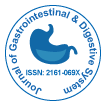Unsere Gruppe organisiert über 3000 globale Konferenzreihen Jährliche Veranstaltungen in den USA, Europa und anderen Ländern. Asien mit Unterstützung von 1000 weiteren wissenschaftlichen Gesellschaften und veröffentlicht über 700 Open Access Zeitschriften, die über 50.000 bedeutende Persönlichkeiten und renommierte Wissenschaftler als Redaktionsmitglieder enthalten.
Open-Access-Zeitschriften gewinnen mehr Leser und Zitierungen
700 Zeitschriften und 15.000.000 Leser Jede Zeitschrift erhält mehr als 25.000 Leser
Indiziert in
- Index Copernicus
- Google Scholar
- Sherpa Romeo
- Öffnen Sie das J-Tor
- Genamics JournalSeek
- Nationale Wissensinfrastruktur Chinas (CNKI)
- Elektronische Zeitschriftenbibliothek
- RefSeek
- Hamdard-Universität
- EBSCO AZ
- OCLC – WorldCat
- SWB Online-Katalog
- Virtuelle Bibliothek für Biologie (vifabio)
- Publons
- Genfer Stiftung für medizinische Ausbildung und Forschung
- Euro-Pub
- ICMJE
Nützliche Links
Open-Access-Zeitschriften
Teile diese Seite
Abstrakt
The Delayed Diagnoses of Hypertrophic Pyloric Stenosis due to Hospitalization in Neonatal Intensive Care Unit: A Report of 5 Cases
Nuriye Tarakci, Murat Konak, Hüseyin Altunhan, Rahmi Ors
Hypertrophic pyloric stenosis (HPS) is the most common cause of gastric outlet obstruction in infants. It commonly requires surgery. Its incidence is 0.17-4.4 cases per 1,000 live births. The clinical findings of pyloric stenosis typically appear within three to five weeks after birth. Its most important clinical finding is non-bilious projectile vomiting. If its diagnosis is missed in early period, the most common finding is dehydration (with hypochloremic hypokalemic metabolic alkalosis). However the findings of HPS might be frequently masked in infants hospitalized for longer periods in neonatal intensive care unit. Because vomiting is the one of most common symptoms, it may be related to the different etiological factors of vomiting (congenital or genetic causes, NEC, sepsis, nutritional intolerance), blockage of projectile vomiting with gastric drainage by previously inserted indwelling orogastric/nasogastric catheter which prevents development of excessive gastric dilatation. The accurate diagnosis delays with elimination of severe alkalosis and electrolyte disorder and prevention of malnutrition with administered parenteral nutrition. Herein we would like to draw attention the delayed diagnosis of HPS in five neonatal cases who were hospitalized in the neonatal intensive care unit (nicu) for longer periods.
Zeitschriften nach Themen
- Allgemeine Wissenschaft
- Biochemie
- Chemie
- Genetik und Molekularbiologie
- Geologie und Geowissenschaften
- Immunologie und Mikrobiologie
- Klinische Wissenschaften
- Krankenpflege und Gesundheitsfürsorge
- Landwirtschaft und Aquakultur
- Lebensmittel & Ernährung
- Maschinenbau
- Materialwissenschaften
- Medizinische Wissenschaften
- Pharmazeutische Wissenschaften
- Physik
- Sozial- und Politikwissenschaften
- Umweltwissenschaften
- Veterinärwissenschaften
Klinische und medizinische Fachzeitschriften
- Anästhesiologie
- Augenheilkunde
- Betrieb
- Dermatologie
- Diabetes und Endokrinologie
- Gastroenterologie
- Genetik
- Gesundheitspflege
- Immunologie
- Infektionskrankheiten
- Kardiologie
- Klinische Forschung
- Medizin
- Mikrobiologie
- Molekularbiologie
- Neurologie
- Onkologie
- Pädiatrie
- Pathologie
- Pflege
- Toxikologie
- Zahnheilkunde

 English
English  Spanish
Spanish  Chinese
Chinese  Russian
Russian  French
French  Japanese
Japanese  Portuguese
Portuguese  Hindi
Hindi